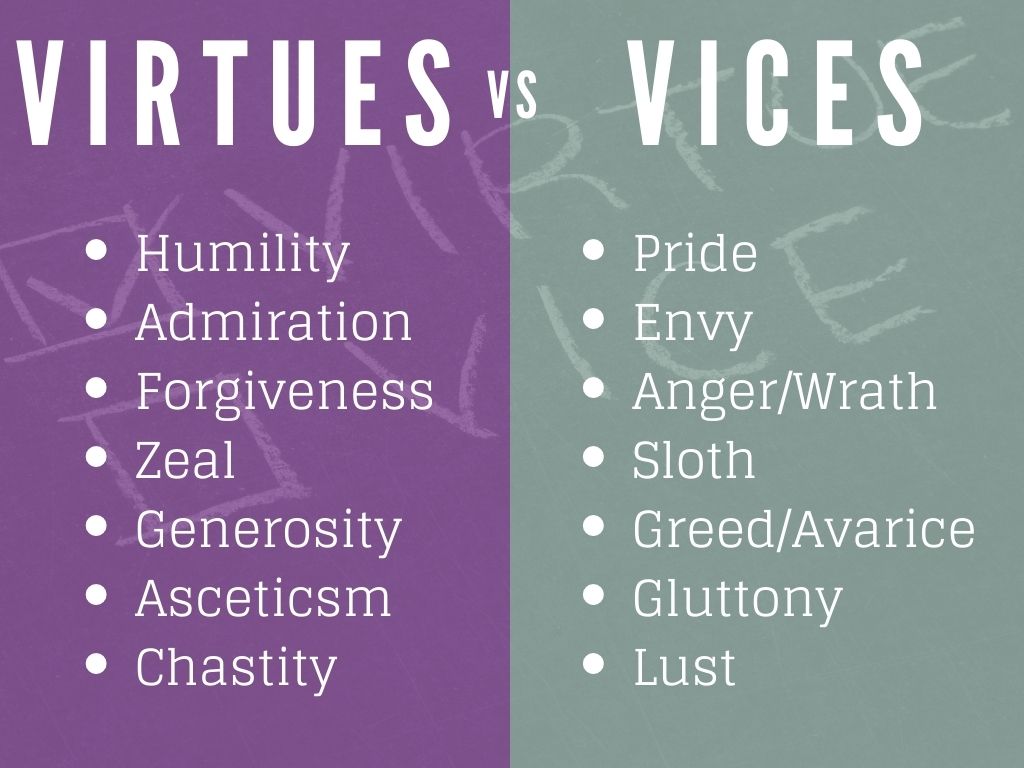

The enormous popularity of this work in the Middle Ages helped to spread the concept of holy virtue throughout Europe.Īfter Pope Gregory released his list of seven deadly sins in 590 AD, the seven virtues became identified as chastity, temperance, charity, diligence, patience, kindness, and humility. Written by Aurelius Clemens Prudentius, a Christian governor who died around 410 AD, it entails the battle between good virtues and evil vices. Compiled Into a List of SevenĪ list of seven virtues that oppose the seven deadly sins appeared later in an epic poem titled Psychomachia, or Battle/Contest of the Soul. These "supernatural" virtues bestowed by God towards man's true happiness are faith, hope, and charity.

The traditional understanding of the differences in the natures of Cardinal and Theological virtues, is that the latter are not fully accessible to humans in their natural state without assistance from God. Related to temperance are the virtues of continence, humility, and meekness.

Justice is the virtue which regulates man in his dealings with others.It is called the Auriga virtutum (the charioteer of the virtues) as it guides the other virtues. Prudence from prudentia (meaning "seeing ahead, sagacity") is the ability to govern and discipline oneself by the use of reason.The Greek philosophers Aristotle and Plato, regarded temperance, wisdom, justice, and courage as the four most desirable character traits. are virtues For she teaches moderation and prudence, justice and fortitude, and nothing in life is more useful for men than these." - The Book of Wisdom 8:7 History and Origins Initial Four Cardinal Virtues


 0 kommentar(er)
0 kommentar(er)
